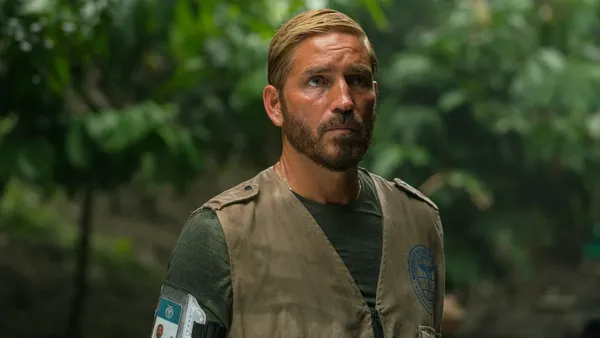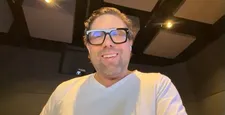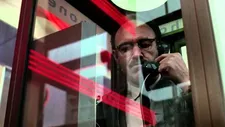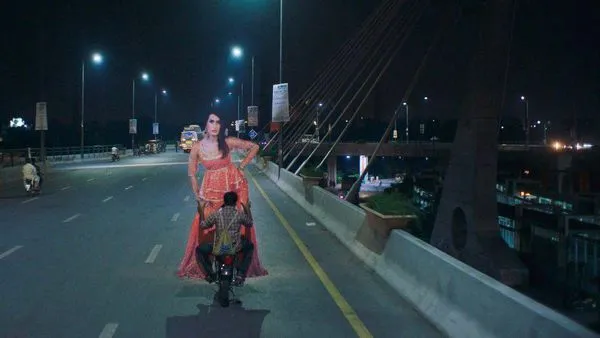 |
| Jim Caviezel in Sound Of Freedom. Sound designer Nathan Ruyle says: It’s been a really fascinating experience being kind of inside of this whole wild ride'' Photo: Angel Studios |
Although the first thing most people probably think about when considering modern films is the look, sound design is also vital. It can be used for simple atmospherics like footsteps echoing up a corridor right through to driving the plot, as the muffled conversation in Francis Ford Coppola’s film of the same name does. In recent years, sound designers have even become characters in films, most notably in Peter Strickland’s work, with Flux Gourmet and Berberian Sound Studio, and in Spanish film Out Of Sync.
I catch up with Nathan Ruyle in the week that Oppenheimer and Barbie were released. He has made a career out of sound design, working on more than 70 films along with TV shows and establishing his own studio This Is Sound Design in Burbank, California, along the way. His latest film is Sound Of Freedom - which is released in the UK later this month - has been creating a noise away from the screen.
Originally shot by Alejandro Gómez Monteverde back in 2018, the film is loosely based on the story of controversial anti-trafficking activist Tim Ballard and his Operation Underground Railroad. Its release was delayed when Fox was taken over by Disney and subsequently picked up by Angel Studios. The film has faced additional controversy regarding the reported arrest of one of the films more than 6,000 crowdfunders for child kidnapping and its star Jim Caviezel’s conservative views - read more about all that in the excellent Vanity Fair article here.
 |
| Nathan Ruyle: Cinema is always where my heart is |
Although we can’t get into specifics as the film hasn’t been screened for the press in Scotland, Ruyle is happy to talk about it saying, “It’s been a really fascinating experience being kind of inside of this whole wild ride”.
He also recommends the Vanity Fair article and says: “I think it’s unfortunate that movie reviewing has become so political, the politics are in front of the movie. And that's a lot of what we experienced.”
He adds: “The other thing that’s interesting is that 11-12 million people have seen this movie now. The film itself is apolitical and just a very moving story about somebody who was compelled to go save some kids. I think that one of the things that we're feeling good about as filmmakers is that the word of mouth, which is about people experiencing the film and having a truly kind of meaningful and moving experience in the theatre, is actually what's driving the movie forward, in spite of a lot of people in the press that try more or less to say, ‘Don't go see this movie’.
“It's funny, in this week, we've just had Oppenheimer out, we have Barbie out and we're this third most watched movie.”
Moving onto the less controversial subject of sound design itself, we talk about his influences, which stretch back to the Seventies.
“I think, as a group, for my generation of sound designers who are coming up, the era of New American cinema is super inspiring. Sound was a big part of New American cinema. I recently was rereading Peter Biskind’s Easy Riders, Raging Bulls, which is the history of the 60s to 70s transition - which I think we're very much back in that moment. This past week is really showing us that people are desperate to get away from IP (intellectual property) and get away from tired, you know, iterative stories and into interesting new original ideas and stories.
“At that time it was westerns and disaster movies and these young filmmakers came in the 70s and said, ‘Let's make movies that are about our experience, and about what's happening in the world’. I think we're actually getting back to that, which is exciting. In Easy Riders Raging Bulls, they said sound was one of the areas that the young filmmakers and the indie filmmakers felt like they couldn't really have access to, because to finish a movie, you had to essentially go to one of the big studios to finish it. And in that, the producers at the big studios kind of had a lot of control over the movie through how picture editorial and sound were finished. And there's all those stories about the Godfather and they were like, literally, stealing prints back to keep them from being changed.”
In terms of named influences, Walter Murch is top of the list. “He's the original sound designer in many ways,” says Ruyle. “He’s a huge inspiration and I love those movies, The Conversation, The Godfather, Apocalypse Now - these are the seminal works of sound design. Even look at this original THX film, which I think is incredible.
He adds: “Ben Burtt [who worked on Star Wars and ET among others], that whole group of people up in the Bay Area. They are so important to reinventing what sound could be, pulling it out of this industrial model at that time, which was kind of centred at Warner Brothers in these kinds of traditional studio spaces and starting to do it in this more hands-on way.
“I'm certainly inspired by the work, but I'm also inspired by that model of working. I own and built-out my own facility here and I think the ethos and spirit of what they were doing in American Zoetrope and these things back in that era, it's kind of how we're thinking now only it's sort of another transition, which is about digital tools. But in many ways, it was very similar in that the technology allowed the filmmakers to be more hands on and to be able to grab a hold of the work in a new way. The work of David Lynch is another great inspiration, which is another kind of outsider kind of approach, Alan Splet was his sound designer.”.
Although Ruyle has worked on some TV projects he says that he prefers working with film.
 |
| Nathan Ruyle says Walter Murch, who worked on The Conversation, is 'the original sound designer in many ways' |
He explains: “I really love the collaboration of it. And I think that, you know, you know, series work is a really different animal. It's more showrunner based, it's more writer based, the turnarounds are very quick for series, you don't really get to dig in and kind of fiddle around, it's a little bit more about efficiency than it is about creativity. For me, cinema is always where my heart is. But within my work in movies, Sound Of Freedom is a $30 million movie and we actually have another movie with that same film team that will actually be coming out later in the year called Cabrini. That's a historical epic that is many multiples of that budget and we're gearing up to doing an even bigger budget film.
“The bigger budget work, it's really about stretching out creatively. And also you just get a lot of time to dig really deeply into the details, which is cool. We start out by doing a temp mix, which is basically a first quick pass over a week or two, once the editorial is close to locking. We'll go through a test street screening phase. So the last movie I just did with Alejandro, Cabrini, we did a screening in LA and New York. In between there they actually recut. So we remixed over a week, then went to New York and got more notes than they were back for another couple of weeks. So, it's a little more iteration, you're getting more feedback, you're trying different things. Then of course, when we get into the process, we actually had many months to work. So we got to do eight weeks of fully recording for that film. Overall, we were working on that movie for six, seven months. So we really have a lot of time.”
He says this sort of process is a very different experience to working on Cannes winner Joyland. There he said they were “using the production audio as the kind of baseline of the movie, and to maintain the integrity so it almost feels documentary-ish”. He adds: “We did the entire process for that movie in probably four or five weeks total from starting it through the entire sound editorial and the final mix.”
Having the This Is Sound Design studio gives Ruyle more freedom.
“I think the truth is that Hollywood is still stuck in a little bit of an older mindset around sound, it is a little bit more service-based, in some ways, it is a little bit more modular, and compartmentalised, and it’s not uncommon to see the sound for a movie where the Foley's done over here, and the sound editing isn't over here, and the mixing is done over here. And the mixers are completely separate from the sound editing team. Early on in my career I kind of realised my approach and thinking was much more holistic and I wanted to be able to actually realise that in a real way and have the facility to do it. That's worked out really well.”
Sound design often involves collaboration with a composer and that’s something Ruyle feels comfortable with.
“I started out in music and as a singer and studied music,” he says. “We're in a big transitional moment in many ways. I think we're also transitioning in terms of musical style a lot more.”
Although noting his love for the bold scoring of the likes of John Williams, who provided iconic scores for the likes of Jaws and Star Wars, Ruyle believes audiences are becoming fatigued with big spectacle, comic book movies.
 |
| Nathan Ruyle worked on Cannes winner Joyland Photo: Courtesy of Cannes Film Festival |
Looking to the future, I ask whether Ruyle has a genre that he’d like to work in more than he has to date.
“We haven't done a lot of science fiction,” he says, noting that when a genre becomes dominated, as that area has by the Star Wars franchise, that “there’s a tendency to hear the same type of sounds used over and over because they're like, ‘Oh, well, these work and there's a familiar language there. So let's just do that again’.”
He adds: “I would love to develop new, different and interesting kinds of sound concepts, in part because a lot of the technology we have to do it is evolving really fast, and there's a lot more potential for that. That's definitely an area I'm really interested in. We've done a few creature-y movies over the years and we’re going to have some more like that coming up.. One of my big beefs is I feel like the sound of the Predator in the Predator movies has become the sound of every creature in every movie, and you hear it over and over.
“I totally understand why that happens. But I think we're entering an era where I think the younger filmmakers are pretty interested in breaking with convention and trying new things.”
Sound Of Freedom will be released in the UK on September 1 and Joyland is currently available to stream on Curzon Home Cinema and other platforms. You can read more about Ruyle’s This Is Sound Design studio on his official site.





















